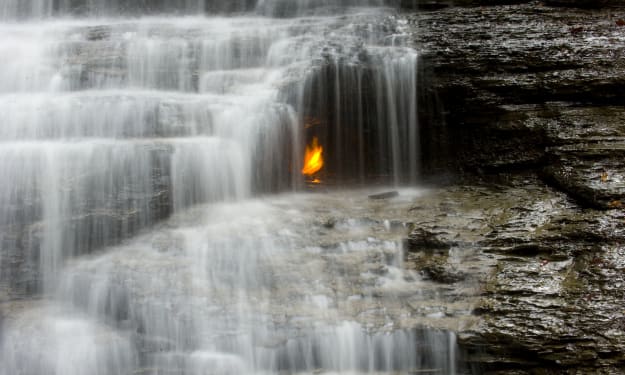
While there is little uncertainty that numerous a Mesozoic vertebrate turned into a dinner for a dinosaur, it might shock discover that a few warm blooded creatures likewise ate on dinos.
An emotional fossil uncovered in northeastern China shows a hostile badger-like well evolved creature in the demonstration of going after a plant-eating dinosaur, mounting its prey and diving into its casualty's ribs around quite a while back, researchers said on Tuesday.
Dating to the Cretaceous Time frame, it shows the four-legged well evolved creature Repenomamus robustus - the size of a homegrown feline - savagely snared with the hooked two-legged dinosaur Psittacosaurus lujiatunensis - as large as a medium-sized canine. The researchers suspect they were out of nowhere overwhelmed in a volcanic mudflow and covered alive during mortal battle.
"Dinosaurs almost consistently outsized their vertebrate peers, so customary conviction has been that their collaborations were one-sided - the greater dinosaurs generally ate the more modest warm blooded animals," said paleobiologist Jordan Mallon of the Canadian Historical center of Nature in Ottawa, who aided lead the review distributed in the diary Logical Reports.
"Here, we have great proof for a more modest vertebrate going after a bigger dinosaur, which isn't something we would have speculated without this fossil," Mallon added.
Most warm blooded animals during the Mesozoic Time, the period of dinosaurs, were wench measured piece players in the bigger venue of life, doing great to try not to become another person's lunch. Repenomamus shows in any event a few well evolved creatures gave as great as they got.
"I believe what's key here is that Mesozoic food networks were more perplexing than we had envisioned," Mallon said.
The region in Liaoning Area where the practically complete fossil was found is known as the "Chinese Pompeii" attributable to different fossils of creatures covered in volcanic emissions.
Looking at the fossil resembled a crime location examination. Repenomamus is roosted on the inclined Psittacosaurus, grasping the jaw and rear leg while gnawing into the ribcage. Repenomamus estimates 1-1/2 feet (47 cm) long. Psittacosaurus is 4 feet (120 cm) long. Both are believed to be not exactly full grown-ups.
"There have been examples of rapacious dinosaurs going after plant-eating dinosaurs previously, yet there has never been an illustration of a vertebrate going after a dinosaur," said Canadian Gallery of Nature scientist and study co-creator Xiao-chun Wu.
It is uncommon to find fossils showing creatures cooperating. One more fossil found during the 1970s in Mongolia shows two dinosaurs - hunter Velociraptor and plant-eater Protoceratops - quarreling over quite a while back prior to being covered alive, maybe in a falling sand rise.
The specialists limited that the Repenomamus and Psittacosaurus fossil showed a warm blooded creature just rummaging a remains.
"As far as one might be concerned, the vertebrate is on top of the dinosaur like it was attempting to quell it, which the rummaging speculation doesn't represent," Mallon said.
"Second, there are no indentations on the bones of the dinosaur, which we would expect on the off chance that it had been sitting out for a really long time, presented to scroungers. Finally, the rear foot of the warm blooded creature is caught by the collapsed rear leg of the dinosaur, which is probably not going to have occurred assuming that the dinosaur had previously been dead when the vertebrate ran over it," Mallon added.
While Psittacosaurus was an early relative of the horned dinosaur heredity, it needed facial horns and a head peak. It had a parrot-like snout to trim plant material.
Repenomamus, one of the dinosaur age's biggest vertebrates, had short and rambling appendages, a long tail, a crooked body, a strong skull and shearing teeth. Mallon contrasted its appearance with the living Chinese ferret-badger.
There was past proof of the dino-dietary patterns of Repenomamus. One Repenomamus fossil from a similar region had child Psittacosaurus bones in its stomach.
Chandrayaan 3 mission live updates: Space apparatus arrived at planned circle toward the back...
Gaganyaan rocket terminating
Watch this space: Gaganyaan tests, Martian natural particles and electron...
ISRO, chandrayaan
ISRO's Chandrayaan-3: From send off to handling, a total aide
Oppenheimer and cilian murphy
A trinity of wild accounts of the genuine J Robert Oppenheimer
"What's one of a kind about our fossil is the way that it shows that Repenomamus was equipped for handling bigger dinosaur prey," Mallon said.






Comments
There are no comments for this story
Be the first to respond and start the conversation.